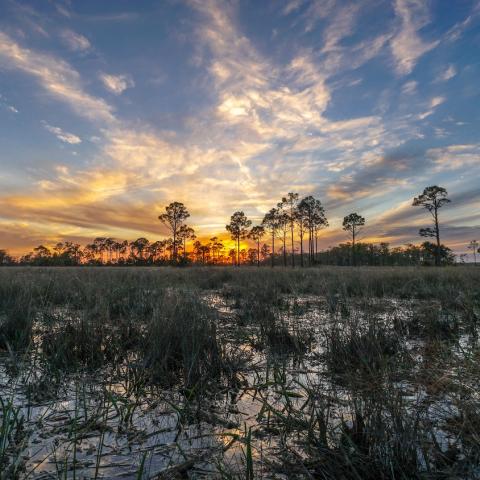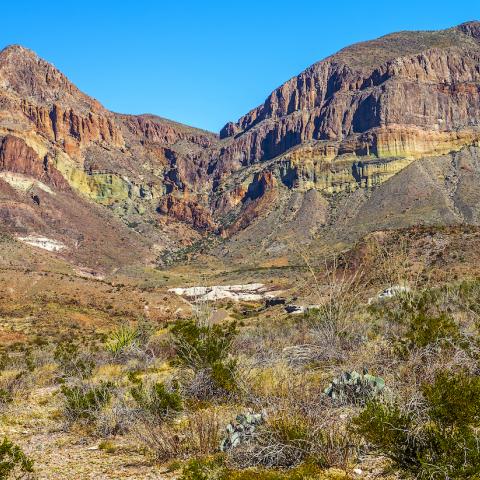We all know about the more charismatic of the endangered and threatened bird species. Trail closures in Acadia National Park and Big Bend National Park remind us that Peregrine Falcons nest on cliffs in parks across the country. Piping Plovers are diminutive shorebirds that bring outsized responses of both appreciation and consternation when their nesting causes beach closures in the national seashores along the Atlantic.
But what if a formerly common bird in the eastern United States declined by 95 percent over the last several decades and no one noticed? That’s exactly what’s happening with the Rusty Blackbird (Euphagus carolinus). The population of rusties is an absolute free-fall and no one is certain why.
Rusty Blackbirds are a migratory species that nests in wetlands in the northern coniferous forests. These breeding areas are nearly inaccessible for research, so little is known about what stressors may be affecting the birds there. There have been high levels of mercury detected in some birds on the breeding grounds, which can lead to a host of negative effects on health. They also undoubtedly suffer from habitat atrophy caused by climate change, which tends to dry the wetlands and generally throw off hydrologic cycles.
But researchers have become increasingly interested in what the birds are facing during their annual migration from southern wetlands to the north woods.
Not being a particularly charismatic bird, Rusty Blackbirds are often overlooked by birders, particularly casual observers. They appear similar to Common Grackles and at a distance they can blend right into a large flock of the ubiquitous Red-winged Blackbirds.
The International Rusty Blackbird Working Group (IRBWG) was formed in 2005 to bring together parties interested in addressing the decline of the bird, to identify research priorities, and begin collecting data critical for conservation programs and management strategies. To address the lack of information about exactly where Rusty Blackbirds stopped during migration, the IRBWG launched a three-year citizen science project called the Rusty Blackbird Spring Migration Blitz. 2014 was the first year of the blitz, which called on birders to seek out Rusty Blackbirds in suitable habitat and report them using a special protocol at eBird.
In 2014, 4,570 birders submitted more than 13,000 checklists during the blitz. That effort helped identify areas of interest that the blitz coordinators are encouraging birders to visit during the 2015 blitz. These are areas that appear to be major migration stop-overs for the birds. Revisiting these locations will provide important information about year-to-year use of particular sites, possibly leading to efforts to protect areas that may lack any kind of current protections.
Congaree National Park is one of the highest priority areas of interest. Congaree provides some ideal wintering habitat for Rusty Blackbirds and can also act as a staging ground for migration. While the habitat within the national park is technically protected from development and other threats, it continues to be stressed by environmental factors such as climate change and pollution. National Park Service biologists and managers can use information from the blitz to identify areas that may require particular attention.
The blitz dates in South Carolina are from March 1 through March 31st.
Other high priority areas of interest fall within Indiana Dunes National Lakeshore, right in the middle of the birds’ migration. The blitz begins in Indiana on March 1st and extends into mid-April.
An interactive map of all of the areas of interest can be found at the Rusty Blackbird Spring Migration Blitz website.
To participate in the blitz, all you need is an eBird account and the ability to identify Rusty Blackbirds. The website also has a handy guide to differentiating rusties from similar species like the Common Grackle.
Consider getting out there early this spring and looking for flocks of Rusty Blackbirds in some of our parks and refuges. The information you collect may be part of the key to identifying why we’re on the path to losing this bird, and even more importantly, how we might stop that tragedy from happening.




 Support Essential Coverage of Essential Places
Support Essential Coverage of Essential Places







Comments
An informative--and depressing--article. I know rusty blackbirds, but I had no idea this was happening.